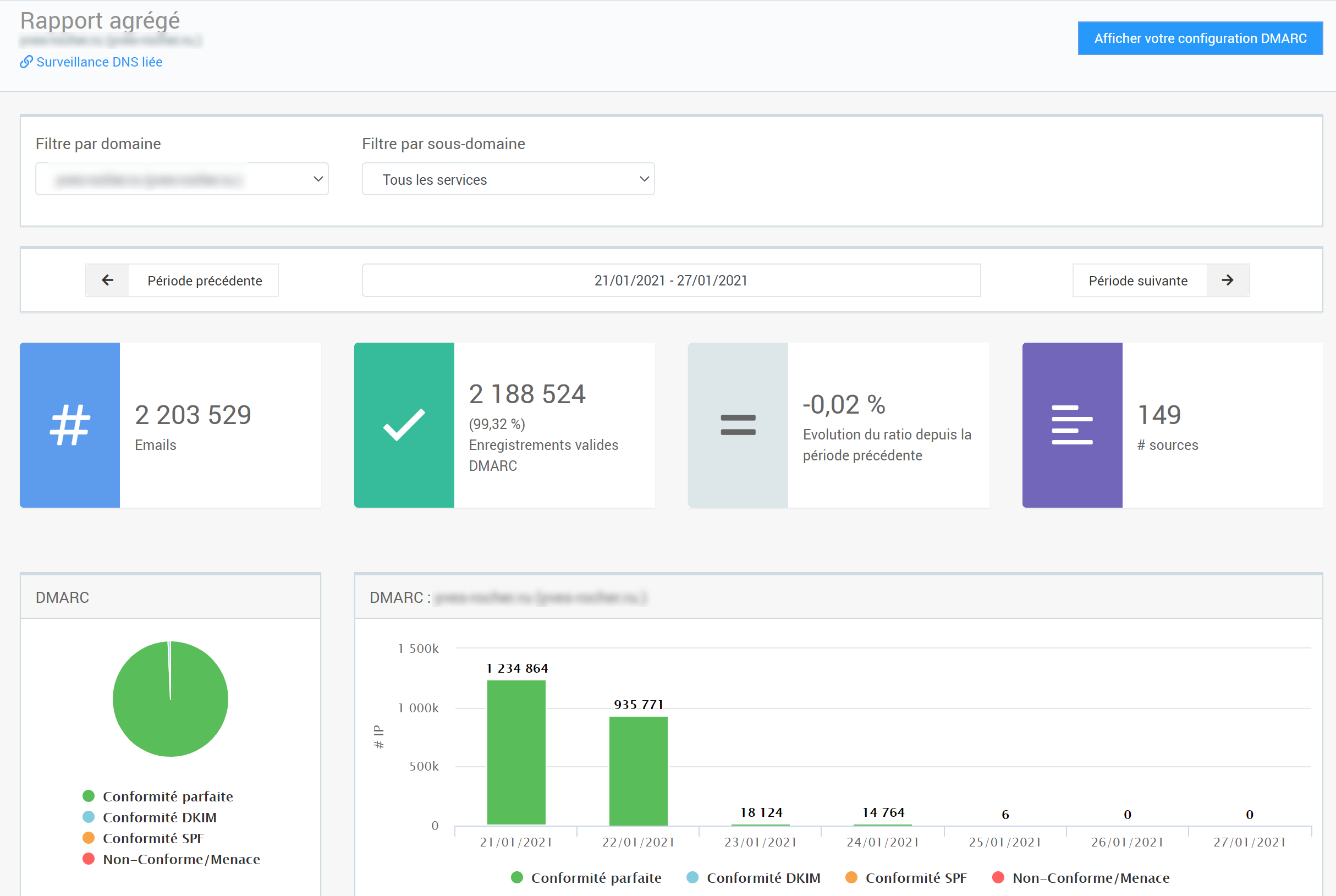User experience
Merox delivers a polished, intuitive user interface that makes navigating DMARC data straightforward. The dashboard is well-organised, presenting key metrics and visualisations upfront. Setting up new domains and configuring DMARC records feels guided, reducing the learning curve for administrators.
We appreciated the clear segmentation of data, allowing us to drill down into specific sending sources, authentication results, and policy actions without feeling overwhelmed. The overall experience is one of efficiency, making daily DMARC management a less daunting task.
DMARC Visualizer offers a user experience that is inherently different, given its self-hosted, open-source nature. While the Grafana dashboards, once configured, are highly customisable and can be very powerful, the initial setup process requires significant technical expertise in server administration, Docker, Elasticsearch, and Grafana.
For those comfortable with these technologies, the customisation possibilities are endless, allowing for dashboards tailored exactly to an organisation's unique requirements. However, users seeking a plug-and-play solution might find the setup and ongoing maintenance a considerable hurdle, requiring a steep learning curve to achieve a smooth workflow.
































 0 / 5(0)
0 / 5(0) 0 / 5(0)
0 / 5(0)

